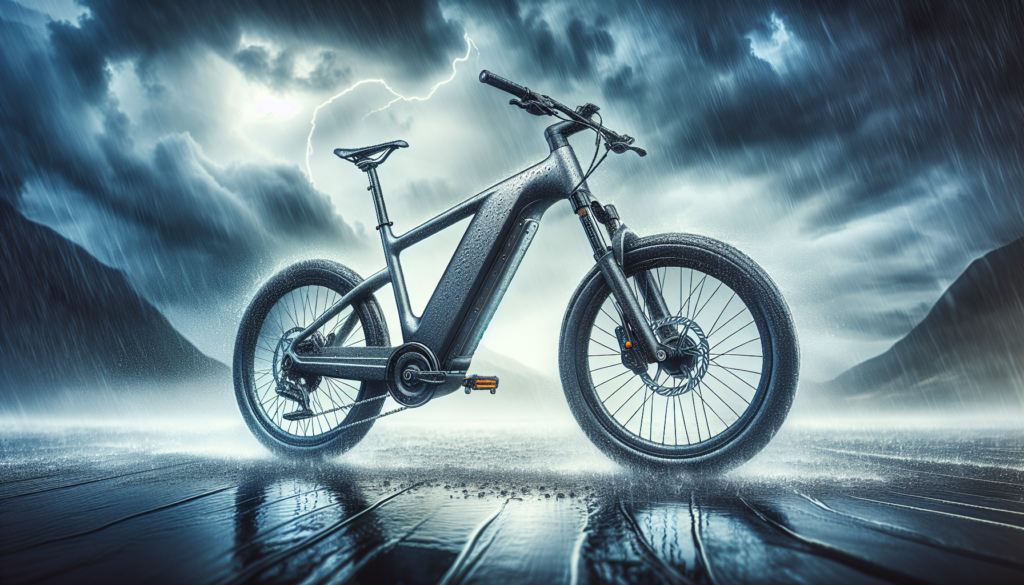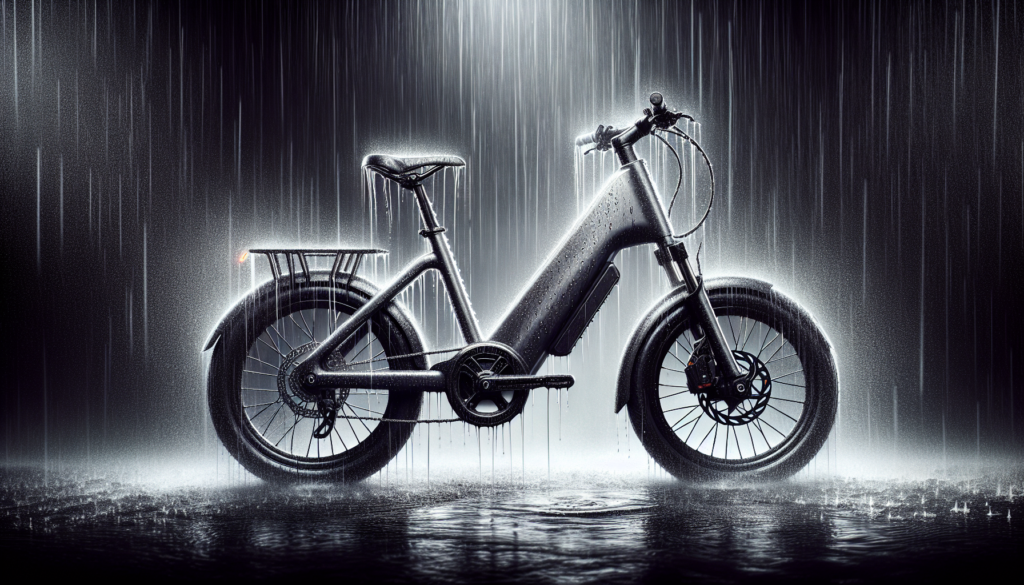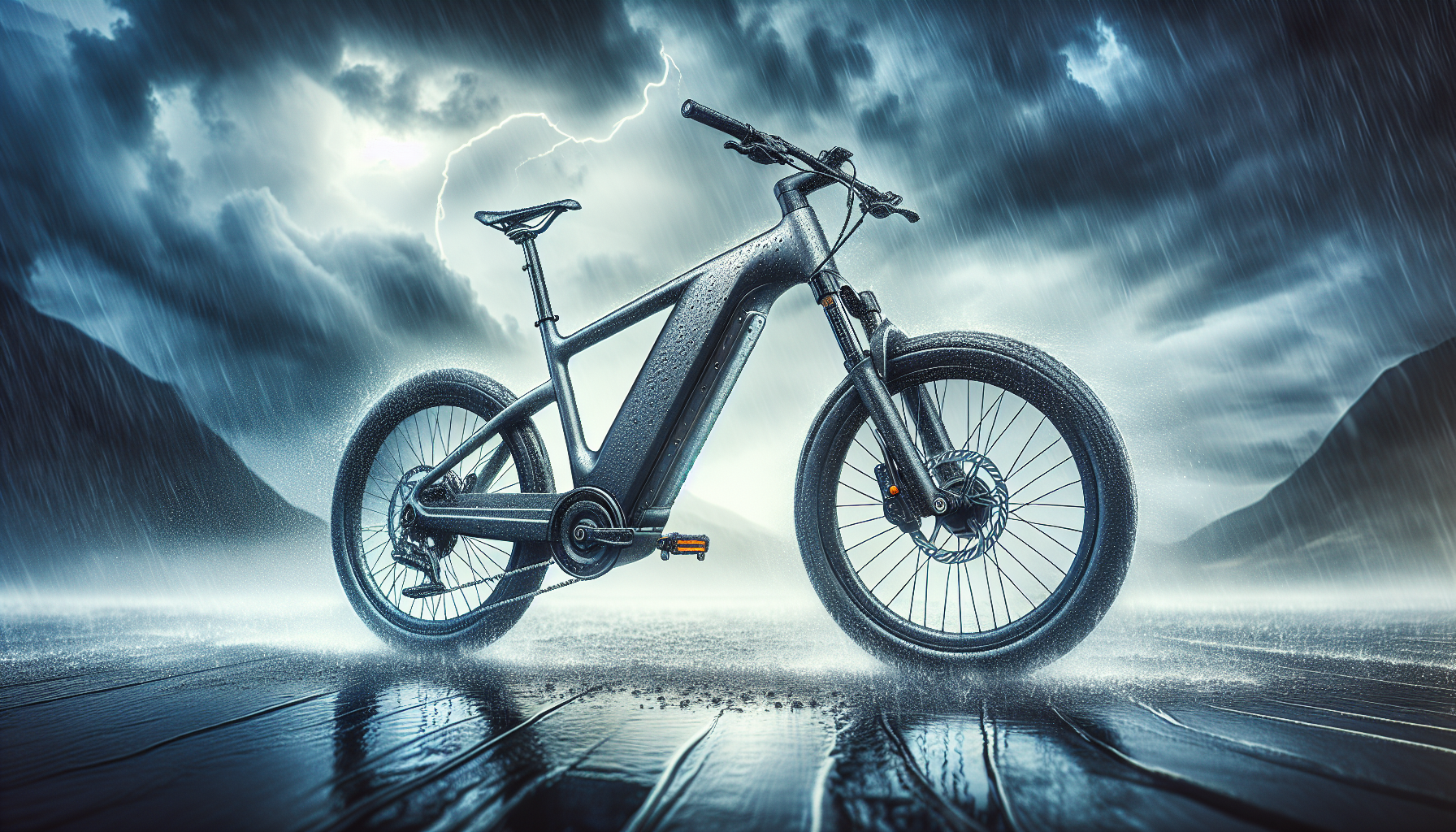Whether it’s blazing hot or freezing cold, you’ve probably wondered if it’s safe to ride an e-bike in extreme weather conditions. Well, the answer might surprise you! While it’s important to take certain precautions and adjust your riding style, e-bikes can actually be a great choice for navigating through challenging weather. In this article, we’ll explore some expert tips and guidelines to help you make an informed decision about riding your e-bike in any condition Mother Nature throws at you. So, grab your helmet and get ready for an electrifying adventure, no matter the weather!
Can I Ride an E-bike in Extreme Weather Conditions?

Understanding Extreme Weather Conditions
Before deciding to ride an e-bike in extreme weather conditions, it is crucial to understand what qualifies as extreme weather and the associated risks and hazards. Extreme weather conditions encompass a wide range of weather phenomena, including but not limited to intense heat, freezing temperatures, heavy rainfall, strong winds, and even snowy or icy conditions. Each of these weather conditions presents unique challenges and can potentially affect the stability, performance, and safety of your e-bike.
Factors to Consider Before Riding an E-bike
Several factors should be taken into account before riding an e-bike in extreme weather conditions. Firstly, the type of e-bike you own plays a significant role in determining its suitability for certain weather conditions. For example, a rugged off-road e-bike may be better equipped to handle wet and muddy terrain compared to a sleek city e-bike.
Battery capacity and range are also crucial factors to consider. Extreme weather can affect the performance and efficiency of your e-bike’s battery, requiring careful planning and consideration of the distance you intend to cover.
Furthermore, the tire tread and grip of your e-bike should be compatible with the weather conditions you plan to ride in. Wet surfaces require tires with excellent traction, while icy or snowy conditions necessitate specialized tires designed for enhanced grip.
The suspension system of your e-bike is also important when considering extreme weather conditions. A well-performing suspension system can help absorb bumps and shocks caused by adverse weather conditions, providing a smoother and safer ride.
Lastly, your ability to handle the conditions should be taken into account. Riding an e-bike in extreme weather conditions can demand more strength, balance, and control than under normal circumstances. Assessing your skill level and physical fitness before embarking on a ride in extreme weather is crucial.
Precautions to Take for Riding in Extreme Weather Conditions
Taking necessary precautions before riding an e-bike in extreme weather conditions can significantly enhance your safety and overall experience. First and foremost, regularly checking weather forecasts is essential. Being aware of any upcoming extreme weather events allows you to plan your rides accordingly, potentially avoiding unfavorable conditions.
Additionally, it is important to assess your personal fitness and condition before braving extreme weather. Riding in extreme heat or cold can place extra strain on your body, so ensuring you are adequately prepared and in good health is vital.
Whenever possible, it is advisable to avoid riding in extreme weather conditions altogether. Safety should always be the top priority, and if conditions are deemed too hazardous, it is best to wait for more suitable weather before embarking on your e-bike adventure.
Planning your routes and destinations is another crucial precaution. Consider choosing routes that offer shelter or are less exposed to extreme weather conditions, reducing the risk to yourself and your e-bike.
Dressing Appropriately for Extreme Weather Conditions
Choosing the right attire for extreme weather conditions can make a world of difference in terms of comfort and safety. Layering clothing is key, as it allows you to adjust your insulation levels accordingly. Start with a moisture-wicking base layer to keep sweat away from your skin, then add insulating layers to trap heat. Finally, top it off with a waterproof and windproof outer layer to protect against the elements.
When it comes to materials, opt for fabrics that offer breathability and moisture-wicking properties. Synthetic materials like polyester and nylon are often favorable choices, as they dry quickly and help regulate body temperature.
Don’t forget to protect your extremities. Wear gloves that provide insulation and grip, and invest in waterproof and windproof shoe covers to keep your feet warm and dry. Additionally, a suitable helmet with a visor or cap is crucial to shield your face from rain, snow, or intense sunlight.
Using weatherproof gear such as bags or covers can also help protect your belongings or e-bike accessories from extreme weather conditions.

Maintaining the E-bike in Extreme Weather
Extreme weather conditions can take a toll on your e-bike, so proper maintenance is crucial to ensure its optimal performance and longevity. Protecting the battery is of utmost importance, as temperature extremes can affect its efficiency and overall lifespan. Store your e-bike in a sheltered area and avoid exposing it to extreme cold or heat for extended periods. If riding in extreme temperatures is unavoidable, consider insulating the battery with a neoprene cover or battery warmer to help regulate its temperature.
Cleaning and lubricating components is another vital maintenance task, especially after riding in wet or muddy conditions. This helps prevent corrosion, rust, and damage to the drivetrain. Regularly check and adjust tire pressure to ensure optimal grip and handling, and examine the brakes and drivetrain for any signs of wear or damage.
Riding an E-bike in Hot Weather
Riding an e-bike in hot weather requires special attention to ensure both your comfort and safety. To avoid the hottest time of the day, plan your rides during the early morning or late evening when temperatures are lower. Staying hydrated is absolutely crucial, so make sure to drink plenty of water before, during, and after your ride. Protecting yourself from the sun’s rays is also vital, so wear lightweight, breathable clothing with UPF (Ultraviolet Protection Factor) ratings and apply sunscreen to exposed skin.
Preventing overheating of the battery is another important consideration in hot weather. Avoid leaving your e-bike directly under the sun for extended periods, and if possible, park it in a shaded or covered area. Keep an eye out for signs of heat exhaustion, such as dizziness, nausea, or excessive sweating, and take adequate breaks to rest and cool down when necessary.
Riding an E-bike in Cold Weather
Riding an e-bike in cold weather presents its own set of challenges, but with proper preparation, you can still enjoy your rides safely. Keeping warm and layering properly is crucial, as the body’s ability to regulate temperature is essential in preventing frostbite and hypothermia. Choose insulating clothing layers that trap warmth while allowing moisture to escape.
Protecting yourself from frostbite and hypothermia is paramount. Wear insulating gloves, thick socks, and a warm hat or balaclava to cover your head and ears. Avoid icy surfaces and snowdrifts whenever possible, as they can pose a significant risk of accidents and loss of control. Additionally, be aware that cold temperatures can affect battery performance, reducing its range and efficiency. Plan your rides accordingly and consider bringing a spare battery if needed.
Riding an E-bike in Rainy Conditions
Riding an e-bike in rainy conditions requires additional precautions to ensure your safety and protect your e-bike from water damage. Using fenders and mudguards helps to keep water spray and mud away from you and your e-bike. Consider investing in waterproof clothing and accessories, such as jackets, pants, and shoe covers, to keep yourself dry.
Extra care should be taken when riding on wet surfaces, as they can be slippery and decrease traction. Reduce your speed, apply brakes gently, and avoid sudden maneuvers that could lead to loss of control. After riding in the rain, dry your e-bike thoroughly and inspect it for any signs of water ingress or damage to electrical components.
Riding an E-bike in Snowy or Icy Conditions
Riding an e-bike in snowy or icy conditions demands extra caution. It is vital to equip your e-bike with tires specifically designed for winter conditions, such as studded tires or those with a deep and aggressive tread pattern. These specialized tires provide improved grip and traction, minimizing the risk of slipping or sliding on icy surfaces.
Taking steps to enhance visibility is also crucial. Use reflective gear, lights, and reflectors on your e-bike to ensure you are easily seen by other road users, especially in low-light conditions. Slow down and be extra cautious when riding in snowy or icy conditions, allowing for longer braking distances and avoiding sudden acceleration or braking.
Riding an E-bike in Windy Conditions
When riding an e-bike in windy conditions, it is important to consider the speed and gustiness of the wind. High winds can affect stability, making it more challenging to maintain balance and control. Maintain a stable riding position by gripping the handlebars firmly and keeping your weight centered over the bike.
Be vigilant of crosswinds, as they can cause sudden changes in direction or push you off course. Anticipate gusts and adjust your riding position accordingly to maintain stability. It is also essential to continuously monitor weather changes, as winds can quickly intensify or change direction, impacting your ride.
In conclusion, riding an e-bike in extreme weather conditions is possible with the right precautions and preparations. Understand the risks associated with different weather conditions, assess your e-bike’s suitability, and take necessary measures to protect yourself and your e-bike. By considering factors such as weather forecasts, personal fitness, appropriate clothing, maintenance, and adjusting your riding technique, you can safely enjoy riding your e-bike in various extreme weather conditions. Remember to prioritize safety, and always use your best judgment before embarking on any ride in extreme weather.

